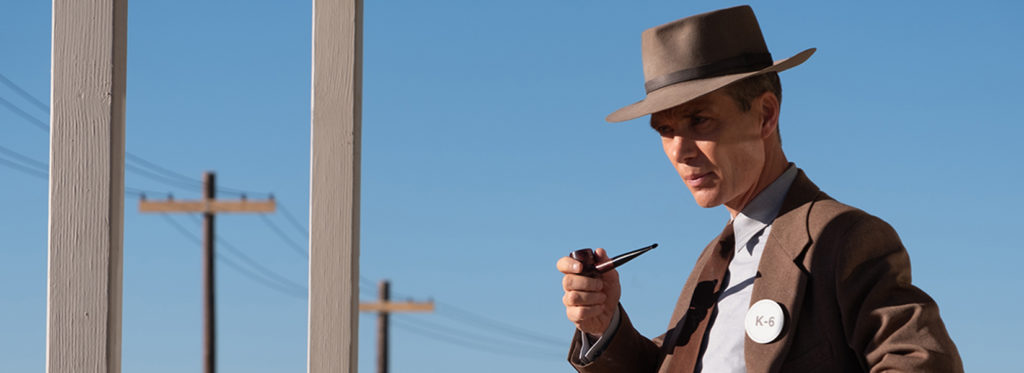Richard King has worked with some of the finest filmmakers in Hollywood, and has crafted soundtracks for some of the finest films ever made. It would be too exhaustive to detail all the sound work he’s done in his career, but his accolades include four Academy Awards, for Peter Weir’s “Master and Commander: The Far Side of the World”, and for his work with Christopher Nolan on the films, “The Dark Knight”, “Inception”, and “Dunkirk”. There are also many other awards and other nominations too lengthy to list.
As a supervising sound editor, and sound designer, Richard’s work spans comedy, drama, and animated films. Besides Christopher Nolan and Peter Weir, he’s worked with directors such as Kathryn Bigalow, Nicholas Roeg, Paul Thomas Anderson, M. Night Shyamalan, Robert Altman, William Friedkin, Steven Spielberg – the list goes on and on. Not one to rest on his impressive laurels, besides “Oppenheimer”, he is also responsible for the sound for Bradley Cooper’s “Maestro”, and the upcoming Denis Villeneuve’s, “Dune: Part Two”!
Richard took time from his busy schedule to speak with me specifically about his spectacular sound design work on “Oppenheimer“.
Woody Woodhall: The dynamics of the sound in “Oppenheimer” are about as wide as nature allows. It goes from the gigantic to the microscopic. From the largest explosion on earth versus the sound of quantum waves and particles and black holes. How did you approach the sound design for quantum particle montages?
Richard King: He [Christopher Nolan] did study the largest objects in the universe down to the smallest, which is really interesting, I think.
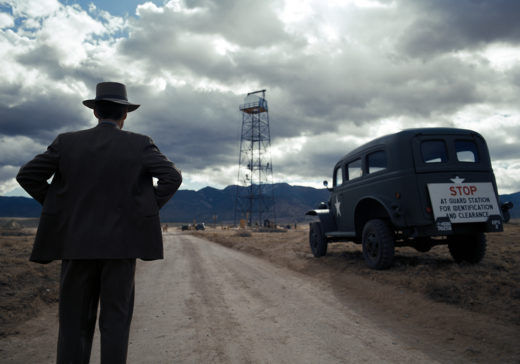
The idea with the quantum particle sequences really was to show the latent power in them. These could be planets interacting or they could be quantum particles interacting. You know, the Trinity test, the 20 kiloton detonation, was caused by a sphere of metal about the size of a softball. Its not much stuff, physical mass of stuff, that made that enormous explosion. So that indicates that every molecule and atom in that sphere of plutonium contained an enormous amount of latent power. My goal was always to make those seem like these are incredibly powerful forces at work, this is what they have to work with as physicists, and this is what they have to exploit to create this weapon.
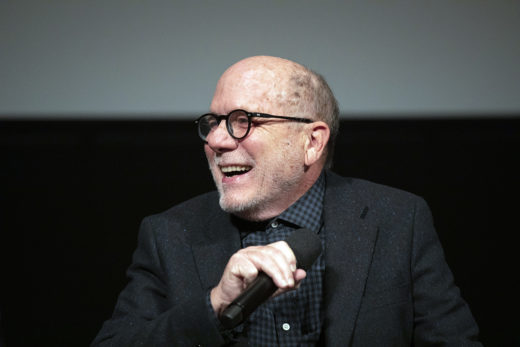
(photo: Alex J. Berliner/ABImages)
WW: I attended an event with you, Christopher, and all of the craft heads from the film. It was fascinating hearing that, to whatever extent possible, specifically for the visual effects team, Christopher wanted everything to be created practically. Does he hold your audio creation and design to the same standard in terms of that?
RK: Well, it’s not an edict, and you don’t want to limit yourself either, there are times when there’s a need to create sounds using an oscillator or something.
I was working from the incredible images that Chris captured with his visual effects team. They did some really cool stuff, all practical, all photographically, without any CGI or visual effects. So we focused on using natural sounds, natural recorded sounds, rather than overuse of a synthesizer or anything to create those sounds. I was really inspired by the images that they came up with.
I feel like the audience can smell reality, can sense when something’s not recognizable or something that they would imagine hearing in the real world, in a recognizable world that they know. I think it has a subtle effect of bringing the audience into the film if they’re not questioning what they’re hearing as being real. It’s a fine line and it’s a hard thing to describe, but I think that to suspend their disbelief, I think they have to be convinced and feel like the characters they’re watching are operating within a familiar, known world.
Now, of course, there are exceptions to that, and there really are no rules of filmmaking. But in general, I think for a narrative film, it’s very helpful. I feel, as an audience member, as a moviegoer, that I’m in a more comfortable, familiar world, identifying more with the plight of the characters, if what I’m hearing is drawing me into that world. I think that it just adds a dose of reality that seems to stick to the screen.
There are exceptions of course to that non-rule, but that was the approach, certainly for Oppenheimer. One of the great moments of tension is after the detonation and we’re waiting for the blast – all that real world stuff.
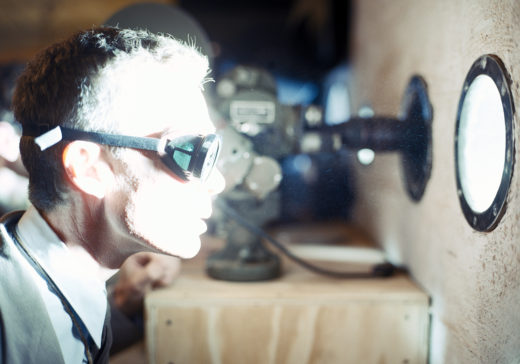
WW: Can you talk about creating and designing that sequence with sound?
RK: Chris and Jennifer Lame, the editor, of course designed the timing and the sequence of events. Obviously, it’s true to reality that the shock wave took something like 30 or 40 seconds to reach the bunker. But really interestingly, it also works incredibly well dramatically because the audience – it’s counterintuitive, the audience expects to see the flash and hear the bang.
For a moment they’re kind of put off, they’re in this subjective realm, completely with the scientists, with the observers, watching in awe, this incredible vision in front of them. And realizing it worked, that this thing they’ve been working on for years from equations on a chalkboard turned out to be accurate, and this event happened – I think it gives the audience a bit of time to kind of digest that, and to read the shock and awe on their faces.
The shockwave hitting is sort of like the conclusion of that, of that breathless moment of awe. Then reality crashes back, and that’s the point at which everyone realizes, well, we were all still alive. We didn’t destroy the earth, and it worked. They can finally breathe a big sigh of relief. It’s a cool way that the sequence is designed. We intentionally delayed the sound from the image a bit, as was appropriate for the distance they were from the glass, just to cue the audience in that we were doing it this way. We were being true to physics and to the speed of sound, the speed of light.
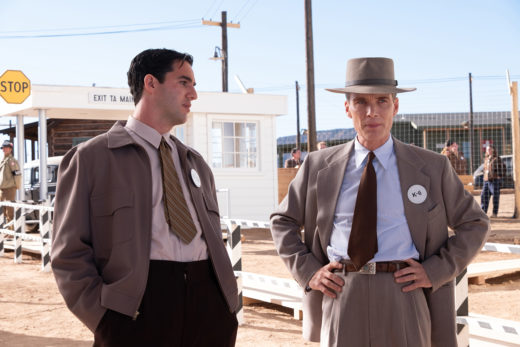
WW: There is a recurring sound motif of stomping and marching. It’s foreshadowed early on, and then comes back several times, and then eventually the source is revealed. Was each moment of that a part of the script, or was that something that was developed in post, or both?
RK: Some of them were part of the script and we ended up adding some more instances of it. For instance, at the very beginning of the film, when we’re seeing the close-up shots of explosions. We added a couple, but some of them were in the script as kind of a foreboding of that scene. It allows us a glimpse into Oppenheimer’s mind and his feelings. When he’s under stress, during one of the great committee hearings, or when he’s pondering nuclear holocaust – it’s a really effective sound because you don’t know what it is until you see it. You’re right, it does sound like it could be marching.
WW: As an audience member, I was thinking, is this an army coming or something like that?
RK: It’s an ominous sound.
WW: Yes. And the payoff is so great in that scene when it finally comes and the sound is then stripped away. It’s one of those introspective moments of the horror of what he had to carry in his heart, I guess, for the rest of his life.
RK: Right, exactly, yes.

WW: Let’s take a moment and speak about your background. A lot of us come to sound as musicians or through live music mixing, that sort of thing. Are you a musician or did you start cutting picture first and then move into sound? Or was the sound work right from the beginning? How did that start for you?
RK: I wanted to be a filmmaker. I grew up making super-8 films with my friends. I went to fine art school and moved to New York, not really knowing what I wanted to do in film. I got a little bit of a taste of everything.
I was lucky enough to get a job for a guy that did documentaries in the industrials, and he shot them, and he cut them, and we took them to a mixing stage and mixed them. So, I got to see the full run of the filmmaking process from shooting through finishing. I really enjoyed the editorial process, kind of like a puzzle, you know, putting the pieces together to make the most sense. He would quite often let me cut a scene or two and say, you can do sound on this sequence and just went off and had a three-hour lunch. I kind of had the golden opportunity of teaching myself how to do all this. After a brief 30-minute demonstration I found the sound part of it to be just incredibly open and freeing, I didn’t have the same limitations of the footage that I was presented with [when cutting picture].
I could do pretty much anything that I thought was right. One of the first projects he gave me was a documentary about the building of a dam, a large hydroelectric dam in Brazil. It was all MOS, it was all shot without sound. So, I started adding sound effects to it and just found the experience really satisfying, kind of magical, in that this two-dimensional image became three-dimensional. I found that very exciting and continued along, kind of the dual sound/picture path for a while because I couldn’t be picky about what kind of work I took. I ended up in Los Angeles as a picture assistant on location for film, but quickly segued into the sound part of the process. I think that was the last picture I was in any way involved, either as a picture editor or a picture assistant on, and very quickly segued to feature sound.
WW: So, the filmmakers that you’ve worked with, their works tend to be more cerebral or sort of metaphysical. The films are more of an introspective experience rather than many films which are much more literal, for lack of a better explanation. Christopher Nolan is really one of the few filmmakers, who can touch on and envision those kinds of ideas filmically. I wonder how you, when you’re involved in working on those more cerebral kinds of scenes, I’m thinking about the Tessaract in “Interstellar” for instance, how you work through those challenges.
RK: Scenes like the one you refer to are really rooted in a basis of actual science and physics. It’s arcane physics and its very theoretical physics, but it does have a basis in science. I came at that through the science perspective and through the perceptual perspective, by trying to imagine, then trying to create an enormous difference in the sensation of being in space, in atmosphere. Making it super clear that the vacuum of space is uninhabitable. We made a clear distinction between when we’re inside the ship and outside the ship. That was in service of showing how out of our element humans are in space.
So, I came at it from the theoretical scientific direction, and also from the — “what would it feel like to be in these situations” kind of perspective, showing that these people are tied to their atmospheric environment. They have to be in that particular place, with a certain temperature, and a certain weight of gravity, and a certain level of chemicals in the air to breathe. What would it feel like to be on the small planet that’s circling the black hole, where gravity is much greater?
In general, I tend to come at films from the audience’s perspective of — what would I feel like if I was in that situation with those characters? What is the most immediate way to use sound to strengthen the audience’s experience?
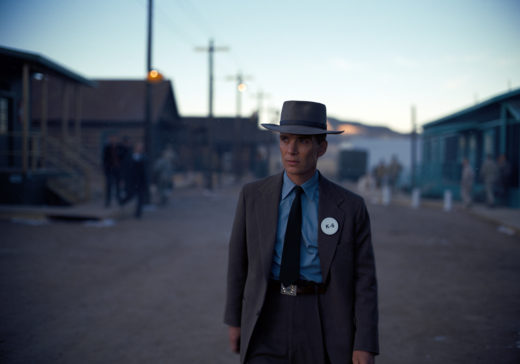
WW: Can you talk about how the sound design evolved in “Oppenheimer” throughout the post process? Were you presenting Christopher the choices with your sound design work as he was making picture editing choices?
RK: It went all the way through to the dub, and through the dub. We were constantly modifying as we were working towards the mix, trying different things, constantly exploring, knowing that there were always three or four or five things on the back burner that we knew we could do better, and we were still kind of working on them in the back of our minds, and then throughout the course of the seven or eight week mix.
Chris was there every single day. It was Jen Lame, the picture editor, Chris, myself, and the mixers and music editor, and we were just focused on — how to make the film better. It definitely evolved all the way up to the very, very, end, in sharpening ideas, and in trying to do different things. Maybe they worked and maybe they didn’t, but yeah, there wasn’t, there was never any kind of blueprint in place. It was always — what can we do with this?
And it’s a fun place to be. A fun, creative place to be.
Woody Woodhall, CAS is a Supervising Sound Editor and Rerecording Mixer and Founder of Los Angeles Post Production Group. You can follow him on Bluesky at wwsm.bsky.social

Filmtools
Filmmakers go-to destination for pre-production, production & post production equipment!
Shop Now